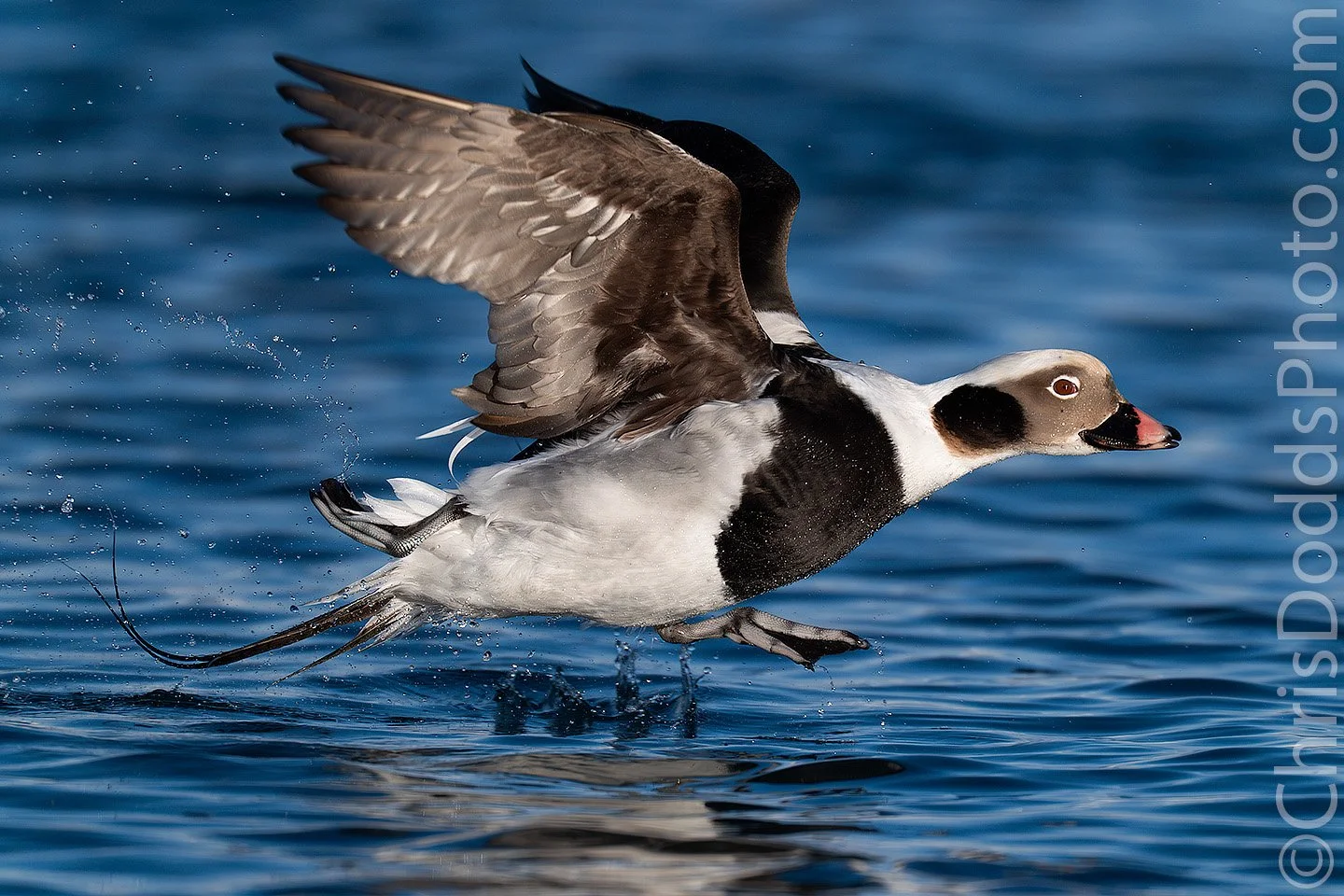While the main event of my Ultimate Brown Bears of Alaska Workshop in June is, of course, the magnificent Coastal Brown bears (also known as Grizzly Bears), the Alaskan wilderness often offers surprises. During a short boat excursion around a small, rocky island, our group had some truly excellent opportunities to photograph Surf Scoters, with their distinctive, colourful bills, Harlequin Ducks and both Tufted and Horned Puffins. While everyone was happily preoccupied with capturing the antics of a playful sea otter, I caught a glimpse of something unique along the Katmai coast in June: a Long-tailed Duck (formerly known as an Oldsquaw) in beautiful breeding plumage as it was taking off from the water. These ducks are stunning, especially the males with their elongated tail feathers and striking plumage.
Long-tailed Ducks are a fascinating species, well-adapted to the cold northern waters. While they breed across the Arctic and Subarctic, including vast areas of Alaska and Canada, they are most often encountered in coastal marine waters during migration and winter. Their impressive diving abilities, reaching depths of over 200 feet, and their complex moulting patterns—boasting three distinct plumages throughout the year—make them a truly unique and beautiful subject for any birder or photographer.
In Alaska, when you're there for one spectacular creature, Mother Nature always has more surprises in store if you're ready to look for them.
Long-tailed Duck Take-off (Clangula hyemalis, Harelde kakawi, Pato havelda, LTDU) from my Ultimate Coastal Brown Bears of Katmai adventure workshop in Alaska. Image Copyright ©Christopher Dodds. Sony a9 III Mirrorless camera & Sony FE 400-800mm f/6.3-8 G OSS Lens @800mm ISO 1,600, f/8 @ 1/5,000s. Manual exposure. Full frame image.
